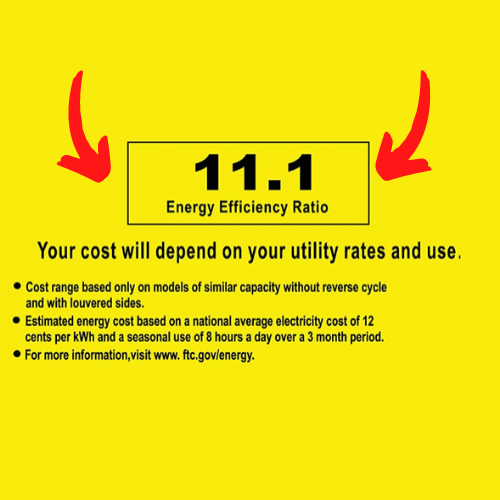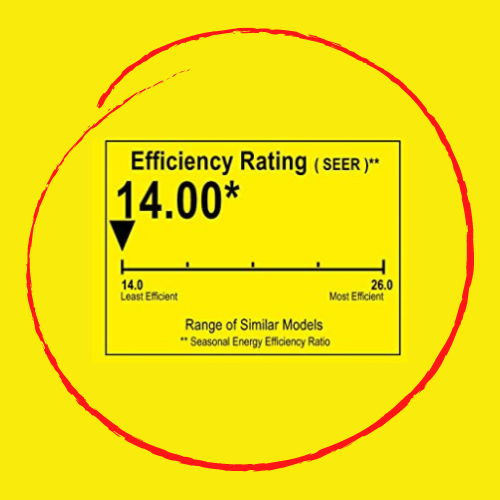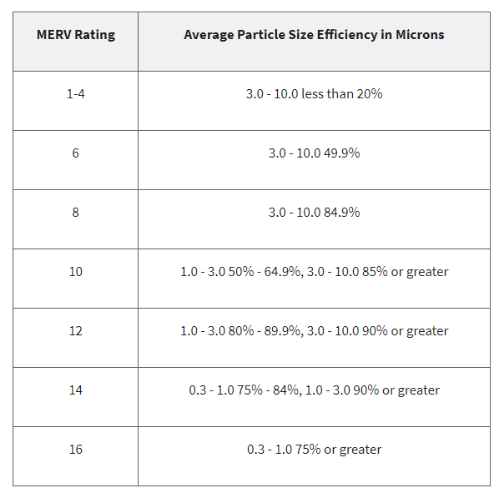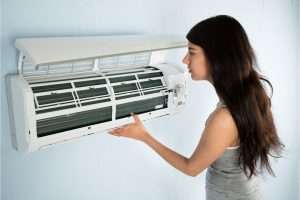What do the EER, SEER, Energy Star, MERV, and Sound Ratings tell you?
Purchasing an air conditioner is an essential long-term investment for your home, especially if you live in Southern California, where the climate is Mediterranean-like, with long warm and dry summers and short mild winters.
According to the US Department of Energy, homeowners spend an average of $29 billion annually for air conditioners that use about 6% of the electricity produced in the United States.
The Value of Air Conditioner Ratings
Air conditioner ratings, required by the federal government on all new equipment, describe the overall energy efficiency of a unit. These ratings specify how efficiently an air conditioner converts its electrical power into cooling output.
A higher rating number means it wastes less energy. A higher rating number also means a lower operating cost and more savings in the long run.
Explained below are the common air conditioner ratings you can find in the unit’s energy guide label, which is a large bright yellow sticker affixed to the item that highlights energy efficiency and operating cost information.
Once you know their meaning, these ratings will help you find the right air conditioner for your home, one that offers the performance you need at a price you can afford.
Energy Efficiency Ratio (EER) Rating
The EER of an air conditioner is measured in BTUs (British Thermal Units) and measures the output cooling energy at a given operating point. For example, a 15,000-BTU air conditioner that utilizes 1,500 watts has an EER rating of 10 (15,000/1,500 = 10).
The Air Conditioning and Refrigeration Institute (ARI) formulated this rating in 1975 for consumers to easily identify the cooling efficiency of a unit by referring to its provided specifications.
The EER is calculated at a 95 °F outside temperature, an 80 °F inside temperature, and a 50% relative humidity.

A higher EER rating indicates a more energy-efficient unit. If you find an air conditioner with a 14 EER rating, you know that it is very energy efficient.
The EER is most valuable for portable units but it has its limitation. The EER is measured only when the unit is in a steady-state and does not include start-up and shutdown cycles in the computation.
Seasonal Energy Efficiency Ratio (SEER) Rating

SEER is the primary efficiency metric used to rate split-system and central air conditioners. Its basic difference with EER is that SEER identifies the expected energy efficiency for the whole season. While EER is measured at a standard 95 °F outside temperature, SEER is measured at air temperatures from 65 °F to 104 °F.
The Air Conditioning, Heating, and Refrigeration Institute (AHRI) provides the SEER rating. In California, federal standards require a minimum SEER rating of 14 for split-system air conditioners smaller than 45,000 Btu/hr.
A higher SEER rating indicates higher energy efficiency. Advancements in air conditioning technology such as multi-stage compressors, refrigerant blends, thinner metal condenser coils, and variable-speed fans have produced conditioning systems that can obtain SEER ratings higher than 20.
Although a unit with a higher SEER rating will not blow cooler air than one with a lower SEER rating, the former can make a significant difference in electricity bills over the years.
While high-efficiency systems are more expensive than mid-efficiency units, long-term savings from their lower operating cost often make up for it.
An online energy savings calculator lets you compare different SEER ratings and calculates how much you could save from 5 to 15 years using an energy-efficient model versus a less advanced unit.
Energy Star Rating
The Environmental Protection Agency (EPA) and the U.S. Department of Energy launched the Energy Star Program in 1992 to promote products, which include air conditioning systems, that save energy, save money, and protect the climate.
An Energy Star attached to a piece of equipment is an assurance that it has passed the EPA guidelines for high-efficiency performance and exceeds the minimum government standards.
Units with the Energy Star rating reduce energy costs by at least 30% compared to their counterparts without this label.

The purpose of this rating is for homeowners to easily compare the difference in energy consumption between similar products.
Minimum Efficiency Reporting Value (MERV) Rating
A MERV rating describes the size of the holes in a cooling system’s air filters that allow air to pass through.
Air conditioner filters remove contaminants such as dust, fiber, pollen, and mold spores from the air circulating through the system.
Filters with higher MERV ratings are more effective at trapping these minuscule particulates. Residential and commercial settings commonly use air conditioners with 9 to 12 MERV ratings.
If you need better levels of air filtration, look for systems that provide air filtration at 17 to 20 MERV levels, such as High-Efficiency Particulate Air (HEPA) filters.
Sound Ratings
Air conditioner ratings also assess the noise level an air conditioner makes. This is expressed by a decibel rating or a Sound Rating Number (SRN).

As a reference, normal talking ranges between 40 and 60 decibels while a television normally operates at around 60 decibels. If an air conditioner operates at 60 decibels, it may interfere with your TV show or conversations. The least noisy cooling systems operate at around 35 to 40 decibels, their noise levels comparable to that of a desk fan.
Lower capacity air conditioners have a lower noise level than higher capacity units. A quieter unit has a lower sound rating.
Finding Your Right Partner for Air Conditioning Services
An air conditioner with a higher EER, SEER, MERV rating, and an Energy Star label is more expensive than its lower-performing counterparts. Maybe you are asking if it is worth the added expense.
In Southern California, where it is usually hot, you will use your air conditioner for many years. Therefore, you will save money over time by using a more energy-efficient cooling system.
However, picking the wrong type and size of the air conditioner, even if it has all the high ratings, will not guarantee savings. If the unit you choose is not the right size for your home, the wrong system, or not properly installed, you might end up just wasting more energy and resources.
The best way to determine the perfect unit for your space is to consult with air conditioning experts who can give you comprehensive information and advice in purchasing an air conditioner guaranteed for comfort and energy savings.
At Home Comfort USA, our team of world-class air conditioning experts would love to install the perfect air conditioning system for your home. Call us at (888) 462-0089 or visit our website for fast and reliable air conditioner installation, repair, and maintenance services in Anaheim, Orange County, Los Angeles, Inland Empire, and other areas in Southern California.






